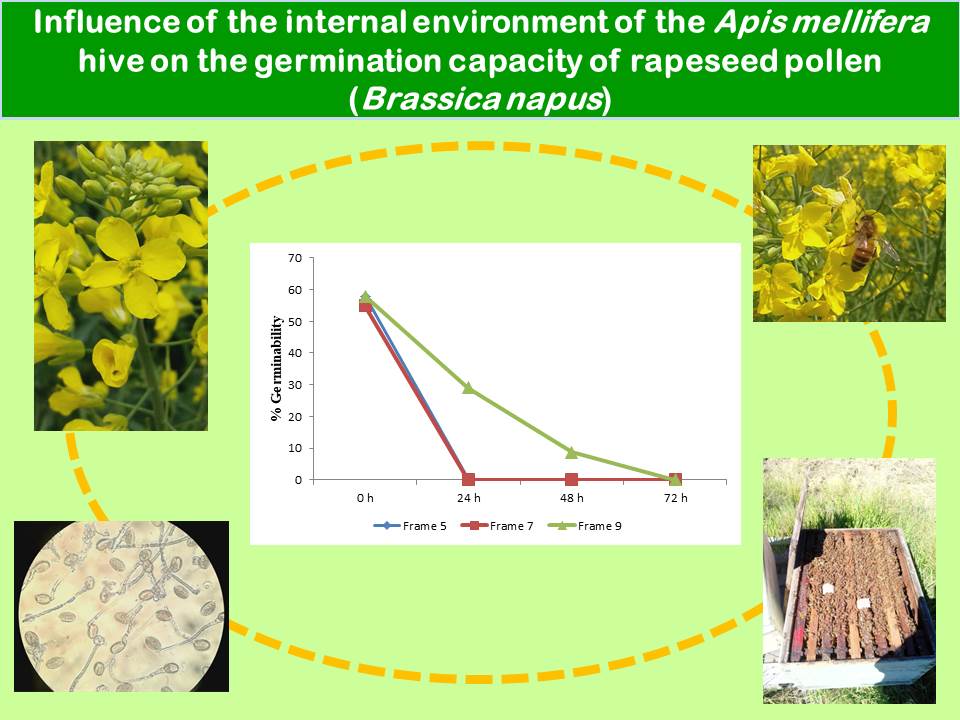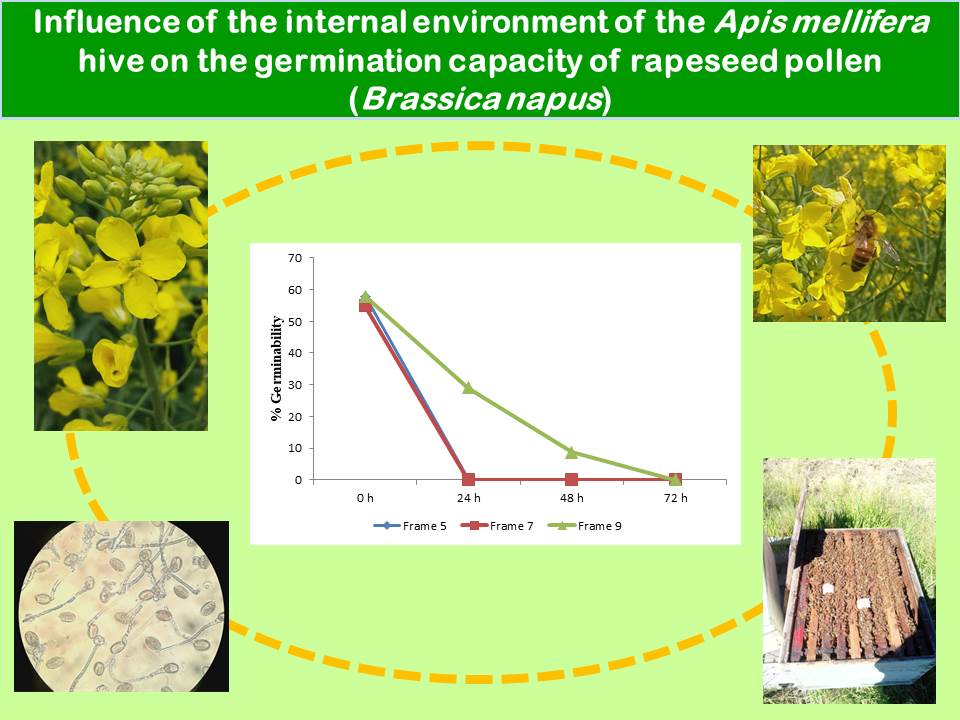Influence of Apis mellifera in-hive conditions on germination capacity of rapeseed pollen (Brassica napus)
Keywords:
canola, germinability, honey bee, pollinationAbstract

Brassica napus L. (rapeseed, canola) ranks third in worldwide importance among oilseeds. The production of hybrid rapeseed seed requires an androsterile female parent; therefore, fertilization is possible through pollinators carrying viable pollen from an androfertile line. To ensure high pollinator populations, hives are used. However, little is known about the risk of transporting viable pollen into hives. The in vitro germinability of pollen exposed to in-hive conditions was evaluated. Samples of rapeseed pollen obtained from potted plants were placed in four hives of Apis mellifera L. In-hive conditions are unfavorable for rapeseed pollen germinability. Brood areas with the highest temperatures showed no germinated pollen grains within 24 h. Starting at 48 h, germinability decreased significantly, with germinated grains showing atrophied tubes. At 72 h, pollen placed away from brood areas lost germinability.
Highlights:
- Pollen grains in the brood area lost their germination capacity after 24 h of exposure to in-hive conditions, markedly reducing the risk of contaminating new seed production plots.
- In the honey areas, pollen germinability decreased substantially after 48 h of exposure to in-hive conditions and germination capacity was completely lost after 72 h.
- The highest germination percentages were obtained with freshly collected pollen (control treatment).
- Fresh pollen had the thickest and most developed pollen tubes. After 24 h in the hive, pollen grains had thinner, shorter, and convoluted pollen tubes. After 48 h, pollen tubes were atrophied.

Downloads
Published
Issue
Section
License
Copyright (c) 2018 Revista de la Facultad de Ciencias Agrarias UNCuyo

This work is licensed under a Creative Commons Attribution-NonCommercial-ShareAlike 3.0 Unported License.
Aquellos autores/as que tengan publicaciones con esta revista, aceptan las Políticas Editoriales.


